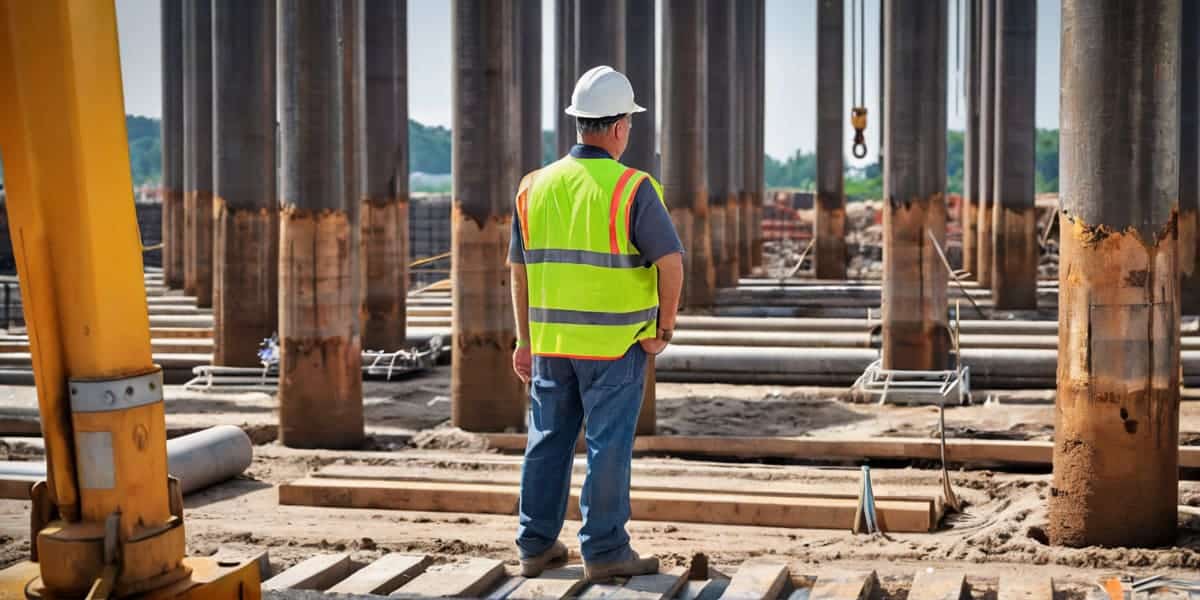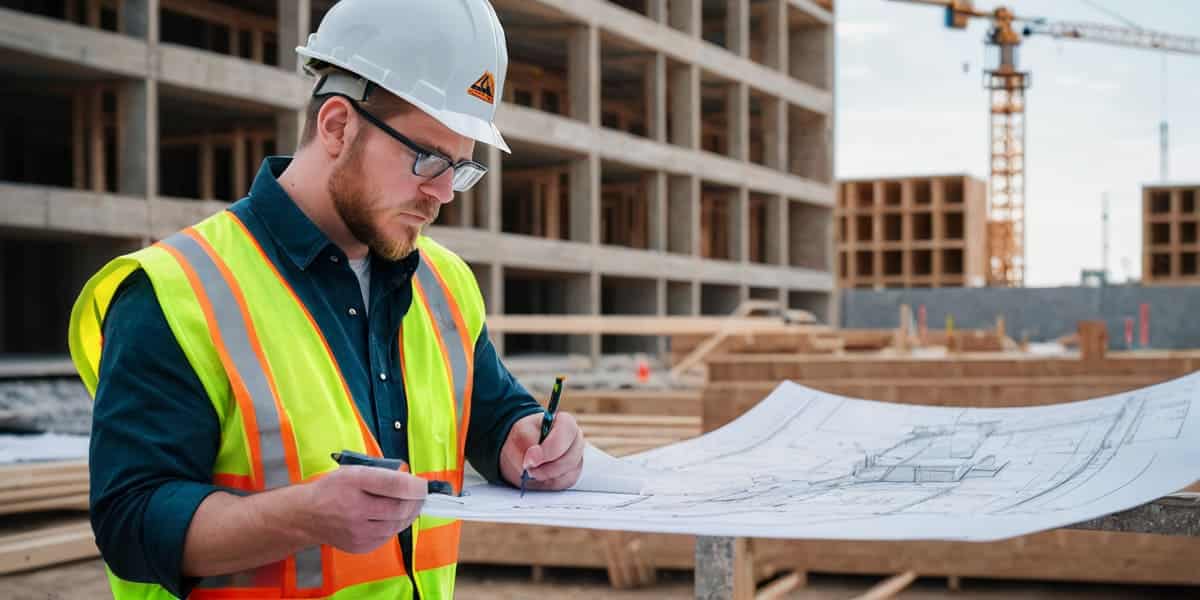 Excavation Techniques and Challenges in Modern Construction
Excavation Techniques and Challenges in Modern Construction

Evolution of Excavation Techniques
In the dynamic landscape of modern construction, excavation techniques have undergone significant advancements. The integration of technology has revolutionised traditional methods, making excavation safer, more efficient, and less disruptive, especially in urban environments.
Adapting to Modern Construction Demands
With the increasing complexity of construction projects, companies are continually seeking innovative excavation solutions. These include precision technologies like GPS and microprocessors that enhance the accuracy of digging, reducing the risk of damaging underground utilities. Robotics and automation have also been introduced, elevating productivity and safety by minimising the need for manual labour in hazardous conditions.
Urban Excavation Constraints
Urban settings pose unique challenges for excavation due to space limitations, noise ordinances, and the proximity of existing infrastructure. Construction companies are adapting by employing techniques such as trenchless technology for utility installation, which minimises surface disruption. Real-time monitoring systems are also being utilised to assess structural integrity and geotechnical conditions, ensuring the safety of nearby buildings.
Comparative Analysis of Excavation Methods
This article provides a comparative analysis of traditional versus modern excavation methods, highlighting the trade-offs between cost, efficiency, and environmental impact. By examining case studies and industry trends, you can gain insights into the most effective strategies for various project scenarios, from deep foundations in skyscrapers to the delicate intricacies of archaeological sites.
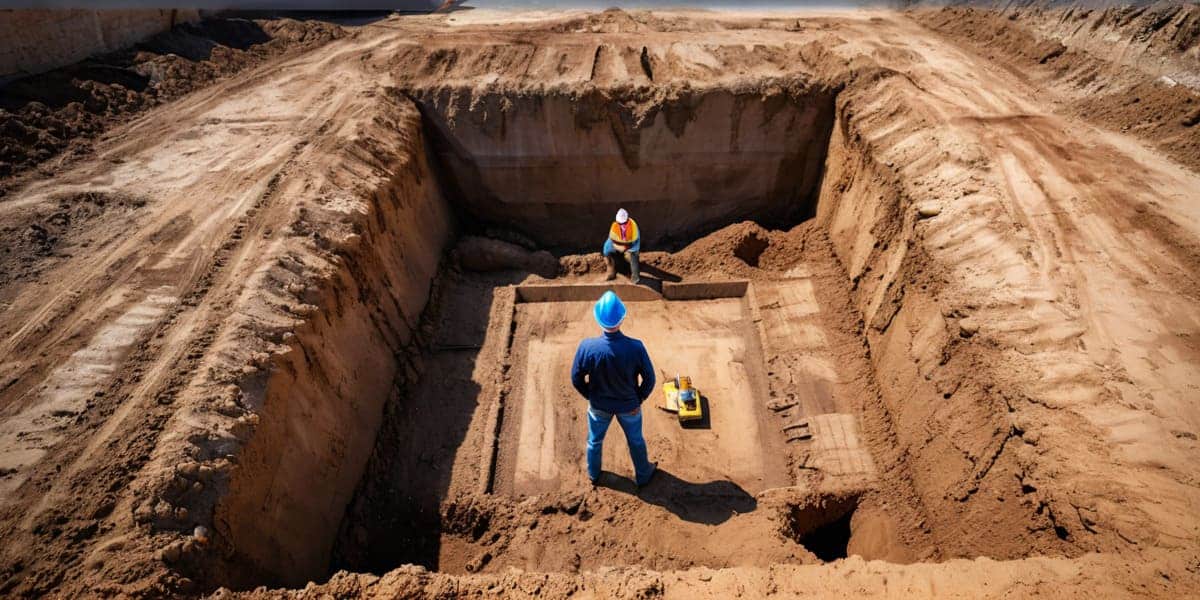
Digging Deeper: Understanding Soil and Rock Mechanics
Understanding the mechanics of soil and rock is foundational to the success of any excavation project. The behaviour of these materials under stress dictates the approach and equipment required for safe and efficient excavation.
The Role of Soil Mechanics in Excavation
Soil mechanics provide insights into the load-bearing capacity, permeability, and stability of the ground. Knowledge of these properties is essential as they influence the choice of excavation method. For instance, sandy soils may require different shoring techniques compared to clay-rich soils due to their respective cohesion and angle of repose.
Impact of Soil Types on Excavation Strategies
Different soil typesfrom loose gravels to dense siltspresent unique challenges. Loose soils may necessitate additional reinforcement to prevent cave-ins, while more cohesive soils might allow for steeper excavation walls. Recognising these differences ensures that the chosen excavation strategy minimises risk and maximises structural integrity.
Rock Mechanics and Excavation Safety
Rock mechanics, the study of the behaviour of rock formations, directly impacts excavation safety. Understanding the stress distribution and potential failure points in rock can prevent catastrophic collapses. This knowledge is critical when excavating near existing structures or in areas with complex geological histories.
Contribution to Excavation Challenges Narrative
Grasping the intricacies of soil and rock mechanics is not just about choosing the right tool for the job; it’s about foreseeing and mitigating potential risks. This understanding is integral to the broader narrative of excavation challenges, as it underpins every decision made from the planning phase to the execution of the project.
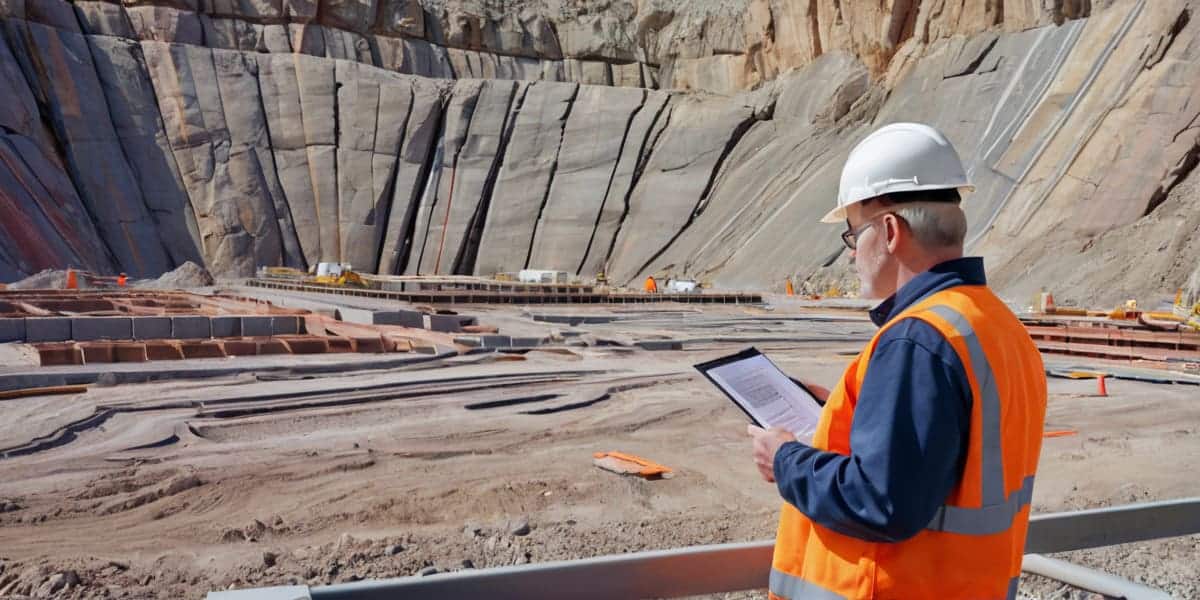
Cutting-Edge Equipment: Revolutionising the Excavation Landscape
The landscape of modern excavation is being reshaped by technological advancements that are enhancing the efficiency and precision of construction projects. These innovations are pivotal in addressing the challenges posed by traditional, labour-intensive methods.
Technological Advancements in Excavation Equipment
Recent innovations in excavation equipment include the integration of GPS and microprocessor technology, which allows for precise machine control. This precision reduces the margin of error, ensuring that excavation is completed correctly the first time, thereby saving both time and resources.
Enhancing Efficiency and Precision
The adoption of robotics and automation in excavation equipment has led to significant improvements in productivity. Automated machinery can operate continuously, reducing the need for manual labour and minimising the risks associated with human error. These technologies also contribute to a safer work environment by performing tasks that would be hazardous for workers.
Cost-Benefit Analysis of Modern Equipment
Investing in modern excavation equipment may come with a higher initial cost, but the long-term benefits often justify the expenditure. Enhanced precision reduces waste, while increased efficiency can shorten project timelines, leading to cost savings. Additionally, the reduced need for manual labour can lower long-term labour costs.
Addressing Traditional Method Challenges
By leveraging these technological advancements, construction companies can overcome the limitations of traditional excavation methods. The increased use of automated and precise equipment addresses the industry’s labour shortage by reducing the dependency on a large workforce, while also mitigating the physical demands placed on workers.
Navigating the Maze: Urban Excavation and Infrastructure
Urban excavation presents a complex challenge, intertwining the need for development with the preservation of existing infrastructure. Property developers must navigate this maze with precision and foresight.
Approaches to Urban Excavation
In the heart of bustling cities, property developers face the task of excavating without disturbing the intricate web of underground utilities and structures. They employ advanced techniques such as:
- Conducting thorough geotechnical assessments to understand the soil composition and stability.
- Utilising non-invasive methods like vacuum excavation to expose underground utilities safely.
- Implementing real-time monitoring systems to detect any shifts or movements in surrounding structures.
Minimising Impact on Surrounding Structures
To protect the urban environment, developers use strategies that minimise vibrations and structural stress, such as:
- Employing precision excavation equipment that can navigate tight spaces.
- Using trenchless technologies for installing utilities without extensive open excavation.
Mapping and Technology Integration
Advanced technologies play a pivotal role in urban excavation by:
- Incorporating Ground Penetrating Radar (GPR) to locate and map existing infrastructure.
- Leveraging Building Information Modelling (BIM) for accurate visualisation and clash detection.
Urban Development’s Influence on Excavation
The narrative of urban development demands that excavation strategies adapt to the constraints of limited space and heightened regulatory scrutiny. Developers must balance progress with the preservation of the urban fabric, ensuring that each excavation project aligns with the city’s long-term vision and infrastructure integrity.

The Green Dilemma: Balancing Excavation with Environmental Stewardship
Environmental stewardship is a critical consideration in modern excavation projects. As construction companies break ground, they are faced with the responsibility of minimising their impact on the natural world.
Environmental Challenges in Excavation
Excavation activities can pose significant environmental challenges, including:
- Disturbance to local ecosystems: Displacement of flora and fauna during site clearing.
- Soil erosion and sedimentation: Uncovered soil can lead to increased runoff and sediment in waterways.
- Pollution: The potential for contaminating local water sources with construction debris.
Mitigating Ecological Footprints
To address these challenges, construction companies are adopting various mitigation strategies:
- Implementing erosion and sediment control measures: Such as silt fences and sediment basins.
- Conducting environmental impact assessments (EIA): To understand and plan for potential ecological effects.
- Utilising sustainable excavation techniques: Like hydro excavation, which is less disruptive to the surrounding soil.
Sustainable Practices in Modern Excavation
Sustainable practices are increasingly being integrated into excavation projects:
- Recycling excavated materials: Where possible, materials are repurposed to reduce waste.
- Using eco-friendly machinery: Equipment that runs on cleaner fuels or electric power to reduce emissions.
- Adopting precision excavation methods: To minimise the area of disturbance and protect untouched land.
Addressing Development and Conservation
The problem-solution format effectively highlights the tension between development needs and conservation efforts. By presenting the environmental challenges alongside the strategies to overcome them, construction companies demonstrate their commitment to responsible excavation practices. This approach not only ensures compliance with environmental regulations but also aligns with the broader societal values of sustainability and ecological preservation.
Risk Management: Ensuring Safety in the Trenches
In the realm of excavation, safety is paramount. As construction companies delve into the earth to lay foundations or instal infrastructure, they encounter a host of safety risks that must be meticulously managed.
Identifying Primary Safety Risks in Excavation
The primary safety risks in excavation include cave-ins, falls, equipment accidents, and contact with underground utilities. These hazards demand constant vigilance and a proactive approach to risk management to ensure the well-being of workers.
Evolution of Safety Protocols in Excavation
Modern safety protocols have evolved to incorporate comprehensive training, the use of personal protective equipment (PPE), and the implementation of protective systems like trench boxes and shoring. These measures are continually refined in response to new insights and technological advancements.
Technological Forecasting of Excavation Risks
Technology plays a crucial role in enhancing safety. Systems like real-time monitoring and geotechnical sensors can forecast potential accidents by detecting shifts in soil stability or breaches in safety parameters, allowing for immediate corrective action.
Integrating Safety Measures into the Excavation Narrative
The narrative of excavation is incomplete without a thorough discussion of safety measures. By weaving in the importance of risk management, the article underscores the industry’s commitment to protecting its workforce and upholding the highest safety standards. This focus on safety is not just a legal obligation but a moral imperative, reflecting the industry’s dedication to its most valuable assetits people.
Legal Landscapes: Excavation in the Eye of Regulation
Navigating the legal complexities of excavation is a critical aspect for construction companies. Compliance with regulations ensures project legitimacy and safeguards against potential legal disputes.
Confronting Legal Challenges in Excavation
Construction companies face a myriad of legal challenges during excavation projects. These range from securing the necessary permits to adhering to environmental protection laws. Failure to comply can result in costly delays, fines, or even project cessation.
Regional Regulatory Variations Impacting Excavation
Regulations governing excavation can vary significantly across different regions. Companies must be aware of local zoning laws, state environmental regulations, and federal safety standards. This regional variation requires a tailored approach to each project, ensuring that all legal requirements are met.
Strategies for Permit and Compliance Navigation
Effective strategies to navigate the permit and compliance web include:
- Early engagement with regulatory bodies: Establishing a dialogue with local authorities can clarify requirements and expedite the permitting process.
- Consulting legal experts: Legal advisors specialising in construction law can provide invaluable guidance on compliance matters.
- Investing in compliance software: Digital tools can track regulatory changes and manage documentation, streamlining the compliance process.
Integrating Legal Considerations into the Excavation Narrative
The structure of this article integrates legal considerations into the broader excavation narrative by highlighting their impact on project planning and execution. Understanding the legal landscape is not just about avoiding penalties; it’s about ensuring that excavation projects contribute positively to the community and environment while respecting the rule of law.
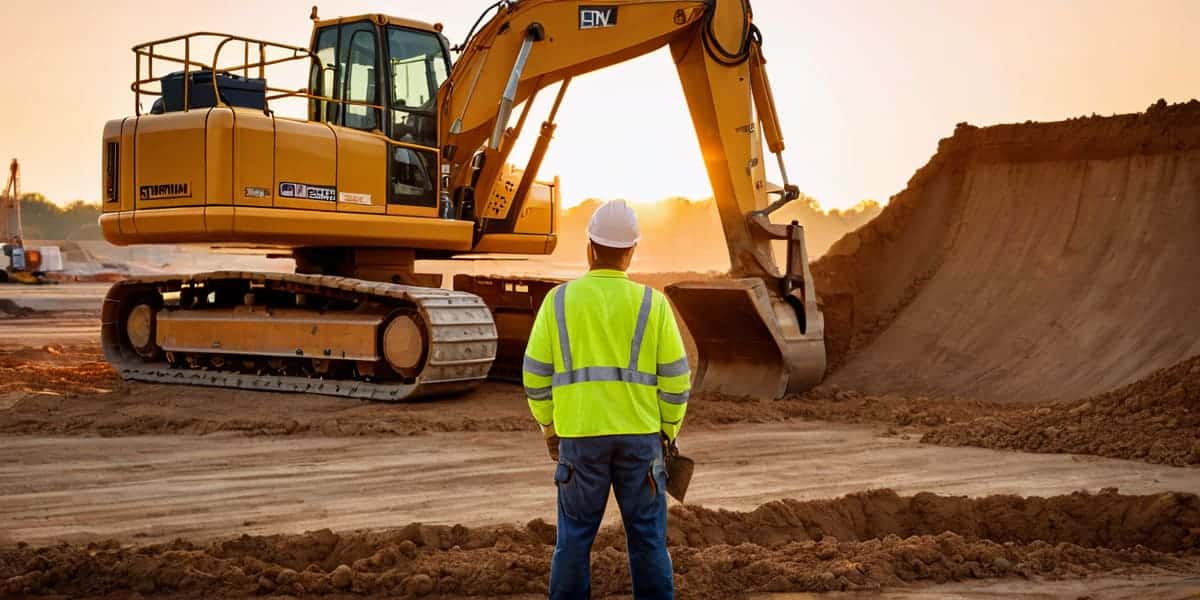
Cost Calculations: Economic Factors in Excavation Decision-Making
Economic considerations are a driving force behind the selection of excavation techniques. Developers and construction companies must weigh the costs and benefits to determine the most financially viable options.
Influence of Economics on Excavation Techniques
The choice of excavation method is influenced by several economic factors:
- Equipment and labour costs: More advanced or faster techniques may require expensive machinery or specialised labour.
- Project timeline: Techniques that expedite excavation can reduce overall project costs by shortening the construction period.
- Site conditions: Adverse conditions may necessitate more costly excavation methods to ensure safety and compliance.
Financial Implications of Excavation Challenges
Unexpected challenges during excavation can have significant financial implications:
- Delays: Encountering uncharted utilities or unstable soil can halt progress, leading to increased costs.
- Remediation: Addressing environmental or structural issues discovered during excavation can require additional investment.
Optimising Excavation Costs
Developers can optimise excavation costs without compromising quality by:
- Conducting thorough pre-excavation assessments: To anticipate challenges and plan accordingly.
- Leveraging technology: Using advanced equipment and techniques to increase efficiency and precision.
- Adopting best practices: Implementing industry-standard safety and operational procedures to avoid costly incidents.
Comparative Analysis of Cost-Effectiveness
The article’s comparative analysis sheds light on the cost-effectiveness of various excavation techniques by examining:
- Long-term benefits versus upfront costs: Understanding the return on investment for different methods.
- Case studies: Real-world examples provide insight into the financial outcomes of specific excavation choices.
- Industry benchmarks: Comparing costs against standard practices to identify opportunities for savings.
Water Woes: Managing Hydrological Challenges in Excavation
Managing water during excavation is a critical concern, as the presence of groundwater can pose significant challenges to construction projects. Understanding hydrologythe distribution and movement of water in the areais essential for effective excavation planning.
Techniques to Manage Groundwater
To prevent flooding and manage water tables effectively, several techniques are employed:
- Dewatering: Pumps are used to remove water from the excavation site, keeping the project area dry.
- Cutoff Walls: These barriers are constructed to prevent groundwater from entering the excavation zone.
- Wellpoint Systems: A series of small, closely spaced wells are installed to lower the groundwater level around the excavation site.
Integrating Water Management with Excavation Concerns
Water management is integrated with other excavation concerns through:
- Site Assessment: Prior to excavation, hydrological studies are conducted to understand the water table and soil permeability.
- Continuous Monitoring: Water levels are monitored throughout the project to adapt water management strategies as needed.
Addressing Hydrological Issues in the Narrative
The article’s problem-solution narrative addresses hydrological issues by:
- Highlighting the risks: It outlines the potential complications that water can introduce to an excavation project.
- Presenting solutions: It details the methods and technologies available to manage these risks effectively.
- Emphasising integration: It underscores the importance of considering water management as part of the overall excavation plan.

Training the Troops: Skill Development for Modern Excavation
The landscape of modern construction is ever-evolving, with new excavation techniques and safety standards emerging regularly. To keep pace, ongoing training is not just beneficial but essential for the workforce.
The Necessity of Ongoing Training
Ongoing training ensures that the workforce is proficient in the latest excavation methods and technologies. This is crucial because:
- Safety standards are constantly updated, and workers must be aware of the latest protocols to maintain a safe work environment.
- New equipment and technologies are being introduced, requiring skill updates to operate them effectively.
Adapting Training Programmes to New Standards
Training programmes are adapting to these changes by:
- Incorporating simulation and virtual reality (VR) to provide hands-on experience in a controlled environment.
- Offering certification courses that are recognised industry-wide, ensuring that workers’ skills are validated.
Impact of Skilled Labour on Project Success
The impact of skilled labour on the success of excavation projects is profound. Skilled workers can:
- Enhance efficiency, reducing the time and resources required to complete projects.
- Minimise errors, which can lead to costly delays and safety hazards.
Emphasising the Human Element
The article’s narrative emphasises the human element in excavation by:
- Highlighting personal stories of workers who have advanced their careers through training.
- Illustrating the direct impact that skilled labour has on the quality and safety of construction projects.
By investing in their workforce’s development, construction companies not only comply with industry standards but also contribute to the overall advancement of the construction sector.
Emerging Trends in Excavation Technology
The future of excavation is being shaped by rapid technological advancements that promise to revolutionise the construction industry. As you explore the latest trends, it’s clear that the integration of artificial intelligence (AI) and automation is at the forefront of this transformation.
The Evolution of Excavation with AI and Automation
AI and automation are set to further evolve excavation techniques, offering:
- Enhanced precision: AI algorithms can analyse site data to optimise digging patterns and equipment usage.
- Increased safety: Automated machinery can undertake hazardous tasks, reducing the risk to human workers.
- Improved efficiency: AI can streamline project management, from planning to execution, ensuring projects stay on schedule.
Challenges and Opportunities of Technological Advancements
While these developments present exciting opportunities, they also bring challenges:
- Skill gaps: The workforce must adapt to new technologies, requiring significant investment in training.
- Cybersecurity: As construction sites become more connected, protecting sensitive data becomes crucial.
- Regulatory adaptation: Legislation must keep pace with technological changes to ensure safety and efficacy.
Forecasting the Potential of Excavation Advancements
The narrative of this article anticipates the potential of these technological advancements by:
- Analysing current trends: To predict how they will shape future excavation practices.
- Identifying industry needs: To understand where AI and automation can have the greatest impact.
- Highlighting the benefits: To encourage adoption and investment in these emerging technologies.
By considering these factors, construction companies and property developers can prepare for a future where excavation is safer, more efficient, and increasingly sophisticated.

Synthesising Excavation Strategies for Tomorrow’s Builders
In the dynamic field of construction, synthesising the insights from modern excavation techniques is crucial for builders looking to innovate and improve their practices.
Key Takeaways from Excavation Techniques Analysis
From the comparative analysis, property developers and construction companies should note:
- The importance of soil and rock mechanics: Understanding these fundamentals can guide the selection of appropriate excavation methods.
- The role of cutting-edge equipment: Embracing technological advancements can lead to safer, more efficient excavation processes.
- The impact of urban constraints: Developing strategies to navigate the complexities of urban excavation is essential for minimising disruptions.
Turning Challenges into Opportunities
The challenges highlighted throughout the discussion on excavation can be transformed into opportunities by:
- Investing in workforce training: Ensuring that workers are skilled in the latest techniques and safety protocols.
- Adopting sustainable practices: Balancing excavation needs with environmental stewardship can lead to innovative green construction methods.
- Leveraging legal expertise: Staying ahead of regulatory changes can prevent costly delays and enhance project planning.
Integrating Insights into the Excavation Narrative
As the excavation narrative unfolds, these insights become integral to the overarching theme of modern construction:
- Safety and efficiency remain paramount: The continuous improvement of safety measures and the adoption of efficient technologies are non-negotiable.
- Adaptability is key: The ability to adjust to new challenges and regulations will define the success of future excavation projects.
- Innovation drives the industry forward: Embracing change and seeking innovative solutions will ensure the longevity and relevance of construction practices.

